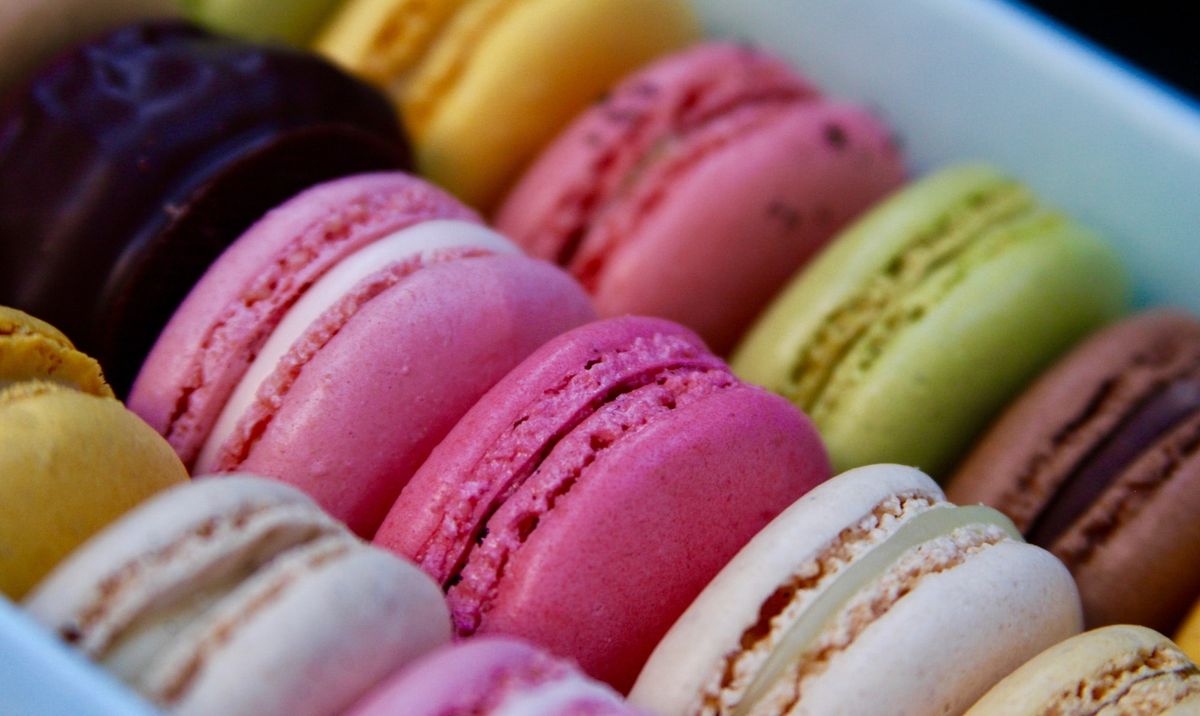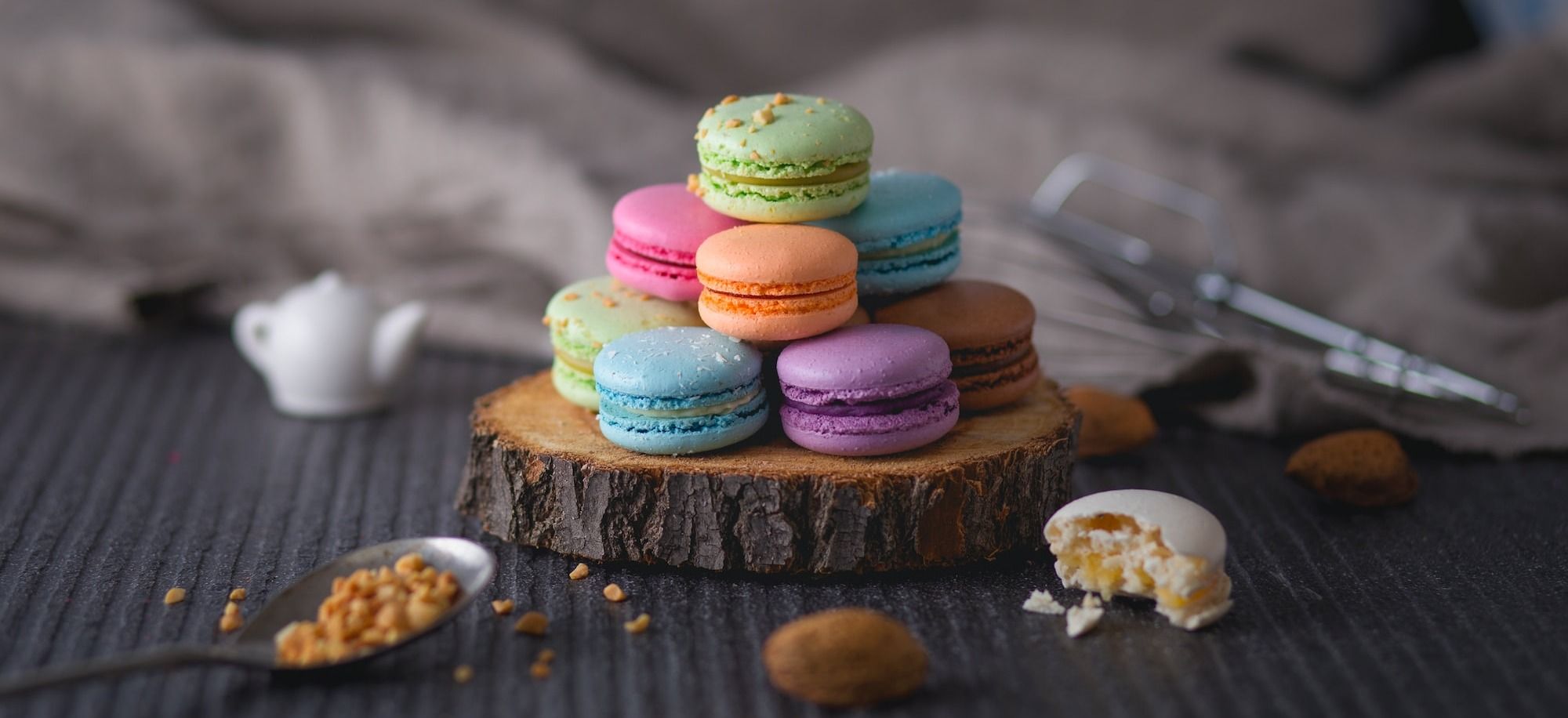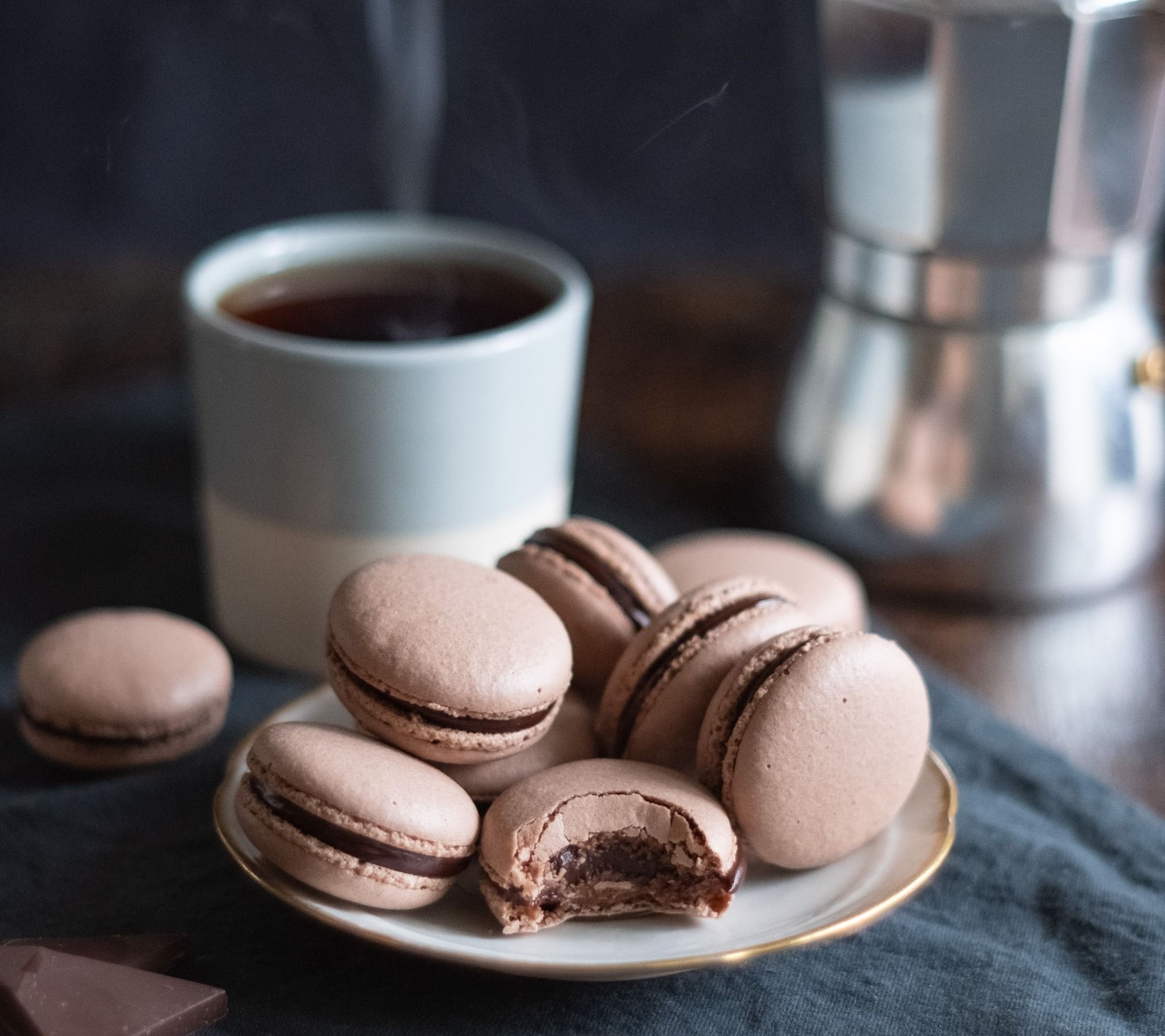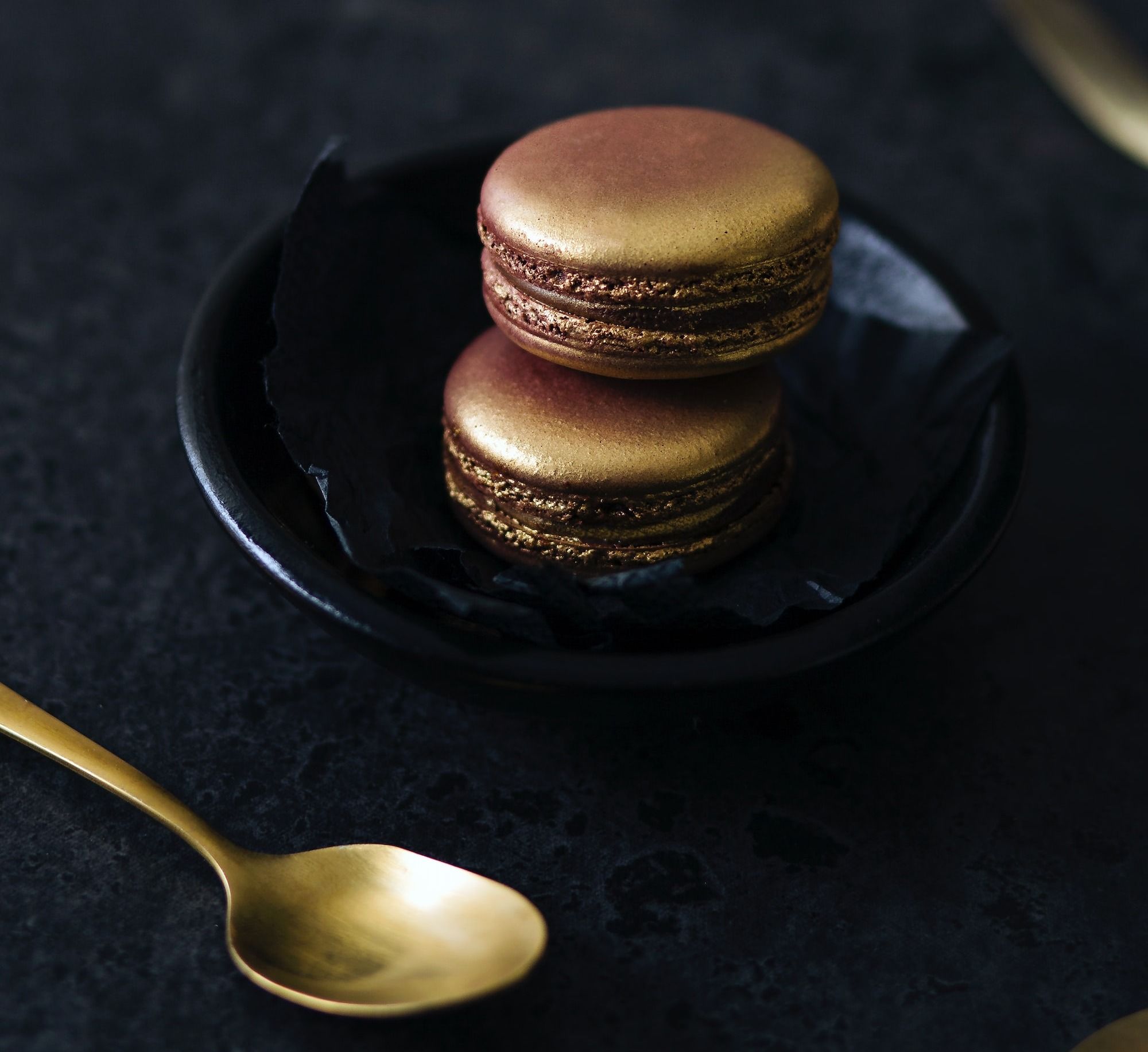French Macarons: Here's Why It's So Expensive
Why do macarons carry a higher price tag? Their premium ingredients play a role, but the intricacies of their preparation also contribute to their elevated cost compared to other desserts.

Macarons are revered not only for their tantalizing flavors and unique texture but also as a mark of luxury. Despite their delicate size, these gourmet treats command a premium price, making it possible to indulge in a $42 box in just moments.

What Are Macarons?
Macarons are elegant meringue confections crafted from almond flour, egg whites, and powdered sugar. They boast a glossy dome, a characteristic "foot" around the edge, and a flat underside.
These bite-sized delights are sandwiched with delectable fillings like ganache, buttercream, or fruit curd, enhancing both flavor and texture. Their meringue foundation ensures a crisp exterior while retaining a soft, chewy heart.
Although the filling often dictates the macaron's taste, it's crucial in achieving the dessert's signature texture.
History and Origin
Hailing from 8th century Italy, macarons gained prominence in France after Queen Catherine de’ Medici's 1533 wedding to King Henry II.
Initially crafted from almonds, egg whites, and sugar, they were cheekily termed “priest’s bellybuttons.” Their luxury appeal peaked when King Louis XIV served them at Versailles in 1682, a tradition lasting until the empire's end in 1789.
Macarons: No Longer Just for Royals
In the wake of the French Revolution, sisters Marguerite and Marie-Elisabeth took refuge in Nancy, eastern France.
Their knack for pastry-making led them to popularize macarons in 1792, introducing to the masses. They soon became renowned as the "Macarons de Nancy."
By the 1830s, macarons evolved into two-biscuit sandwiches filled with jellies or liqueurs.
Paris's iconic tea salon, Ladurée, redefined them in the early 20th century, offering flavors like matcha, salted caramel, and raspberry, a recipe that remains unchanged to this day.
How Much Are Macarons?
In the U.S., individual macarons typically cost between $2 to $3, with prices varying by locale and the bakery's prestige. Especially in high-end New York City bakeries, they fetch a higher price.
Meanwhile, in Paris, a dozen Pierre Hermé macarons are priced at $42.

Why Are Macarons So Expensive?
Mastering the art of macaron-making can be elusive, even for seasoned chefs and bakers.
The temperamental nature of macaron shells, prone to cracking while baking, leads to many being discarded. This wastage inevitably pushes up the price of those that turn out flawless.
Perfecting Macarons Requires Masterful Skill
Achieving the artistry of a perfect macaron isn't just about skill; it's about time. Even though they may seem simple, these delicate treats stand apart from regular baked goods in complexity.
The finest macarons are crafted by seasoned chefs who've dedicated years, sometimes even decades, to refining their technique.
The signature 'feet' on macaron shells, for instance, require exact resting, baking, and moisture control processes. This dedication and attention to detail underscore why perfecting the macaron is a journey often spanning years.
Crafting Macarons Requires Patience
Crafting macarons is notably more time-consuming than baking standard cookies; a process that can easily surpass two hours.
This intricate art requires precision at every stage, from sifting ingredients to perfecting meringue texture.
A single error, such as overmixing, can set a baker back to square one. Given this meticulous nature, their premium pricing is understandable. Beyond baking, even transporting these fragile delights presents challenges.
High Quality Ingredients Makes Difference
French macarons are crafted using premium ingredients such as almond flour, dried egg whites, and organic food colorings.
Some variations elevate the luxury quotient further. For instance, macarons with whipped coffee meringues utilize artisanal, hand-ground organic coffee.
Fillings like rich ganache, luscious buttercream, and tangy lemon curd are derived from top-tier vanilla beans, the finest chocolate, and fresh organic lemons. Candied fruit also occasionally adorns the filling.
Pistachio-based macarons, with their pastel green shells and pistachio-infused filling, command a higher price due to the expensive nature of pistachios.
However, it's not just the luxe ingredients that justify the cost. The true challenge lies in perfecting these confections, a feat achievable only by highly adept chefs.
Aging Eggs for Macarons: Pricey Precision for Crafting Firm Shells
Macarons require precision, especially given their humidity sensitivity. To combat moisture issues, many chefs use aged egg whites, which naturally dry over time, ensuring a firmer macaron shell.
While some opt for store-bought dried egg whites, their steep cost and the time-intensive dehydration process make them a luxury.
Thus, bakers must choose: age egg whites themselves or buy the pricier pre-dried version. Yet, even with their expense, dried egg whites aren't a macaron's costliest ingredient.
Premium Packaging
Macarons, given their fragility, necessitate premium packaging.
Beyond simple bags suited for regular baked goods, these delicate treats often find themselves in sturdy plastic sleeves or artisanal containers like wooden boxes and temperature-regulated cases.
Boutique bakeries emphasize not only protection but also aesthetics, investing in high-end, brand-centric packaging that complements the macaron's allure.
This combination of protective and aesthetic considerations adds to their cost, especially in comparison to more commonplace alternatives. In short, in the world of macarons, both the content and its container hold significant value.
Pushing the Flavor Frontier
Traditional flavors like chocolate and strawberry are staples in the macaron world. However, as the competition intensifies, inventive bakers are exploring uncharted tastes.
From floral hints like rose to eclectic ones like bacon, they're elevating the macaron experience. These avant-garde flavors, demanding unique ingredients and added effort, cater to those seeking something different from the norm.
This blend of novelty and intricacy often accounts for their premium pricing.
Flavor Profile
Traditional flavors include chocolate, vanilla, and raspberry. However, the potential is limitless.
Renowned patisseries frequently debut new, innovative flavors, from matcha green tea to truffle to lavender.
The balance is to have a crisp exterior with a soft, melt-in-your-mouth interior, paired with a complementary filling.
Interesting Facts
- Macaron Day: March 20th is celebrated as Macaron Day where patisseries around the world showcase special flavors.
- Global Popularity: While rooted in European history, macarons have found favor globally, with local variations and flavors emerging in different countries.
- Most Expensive Ever Sold: The Regis Bal Harbour Resort in Miami showcased a $9,000 macaron, infused with white tea and 24-karat gold, elegantly encased in a crystal box—a pinnacle of luxury.
The Most Famous Creators of Macarons in France

Pierre Hermé & His Significance
Pierre Hermé, often dubbed the "Picasso of Pastry," has revolutionized the world of macarons.
Not one to stick to traditional flavors, Hermé is credited with introducing the world to combinations such as olive oil and vanilla or raspberry and rose.
His "Ispahan" macaron, a harmonious blend of rose, lychee, and raspberry, remains a signature and exemplifies the innovation he brings to the table.
Hermé's macarons are not just sweet treats but sensory experiences, making them sought-after luxury items in the confectionery world.
Ladurée: The Original Maestro of Macarons
The name "Ladurée" is often synonymous with macarons, a legacy built over 160 years.
Originating as a Parisian bakery in 1862 by Louis Ernest Ladurée, it later transformed into a luxury tea room under Pierre Desfontaines, who introduced the iconic sandwiched macaron.
While macarons may trace roots to Italy or Arabia, Ladurée popularized this form. In the 1990s, renowned chef Pierre Hermé, once leading Ladurée, added contemporary flavors like pistachio, establishing his own revered brand.
Yet, Ladurée remains a distinguished name in the macaron world.
Conclusion
Macarons stand out as both whimsical and opulent treats to relish. The dedication and expertise bakers invest in crafting them amplify their luxury, making each bite a true indulgence.
Their intricate design and exceptional taste explain their gourmet pricing. The next time you're captivated by these shimmering delights, especially those boasting lavish flavors like "lemon caviar" or "black truffle," you'll understand their premium cost.
Despite varied quality and pricing, there's consensus: these exquisite cookies are undeniably worth the indulgence!


